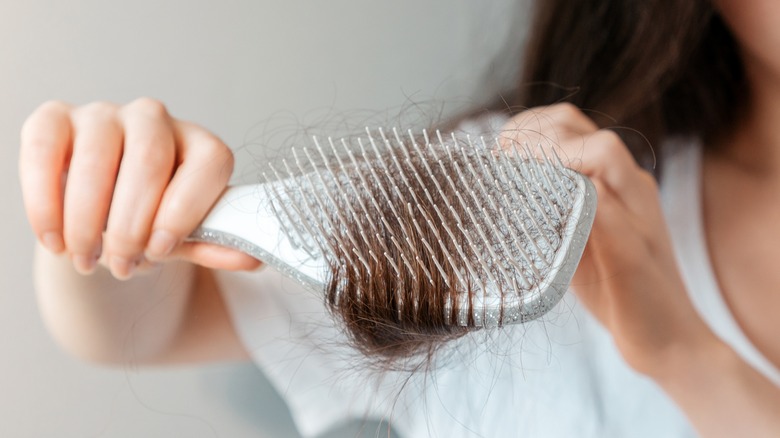How Can You Prevent Traction Alopecia?
Suffering from hair loss can be a mentally and emotionally challenging task. For those who suffer from hair loss, there can be various reasons why you are suddenly finding clumps of hair everywhere. Besides genetics, various factors contribute to your loss of hair. In many instances, this loss of hair will also be referred to as alopecia. According to Johns Hopkins Medicine, alopecia is a blanket term that signifies baldness or loss of hair. Typically when speaking of alopecia, many are aware of alopecia areata, which is an autoimmune disease that causes patches or complete loss of hair. However, there are various types of alopecia, some of which are avoidable and treatable.
One of these types of alopecia that is avoidable is traction alopecia. This form of alopecia is due to continued and harsh hair pulling and styling. While it can be challenging to avoid styling or pulling your hair, there are ways you can prevent traction alopecia before it occurs. Even though you can be careful when styling your hair, there are other ways to ensure you are not damaging your hair follicles to the point of trauma. When your hair follicles are repeatedly damaged, that is when traction alopecia occurs. The best form of preventing traction alopecia is taking the necessary steps to care for yourself and your hair.
Ways to prevent traction alopecia
If you want to prevent traction alopecia, the best thing is to give your hair a break from time to time. Skin Kraft recommends leaving your hair down as much as possible or using braids or a loose ponytail. If you decide to do a loose hairstyle, avoid using any form of rubber or plastic bands to hold the hairstyle in place. These rubber bands can provoke hair loss by pulling out your hair when untying them. If you know your hair is vulnerable, avoid using chemical treatments until it's safe as well. Chemical hair treatments are notorious for causing hair damage and can leave your hair follicles sensitive to breakage.
The University of Iowa Health Care also suggests several small lifestyle changes, like wearing a satin bonnet while you sleep or switching over to satin pillowcases, to help protect your hair. Because the hair can get caught and tugged while sleeping, these satin items will help keep your hair in place without getting pulled. One major cause of traction alopecia is hair extensions. While they look magnificent, repeated use can cause damage to your hair follicles too. Give your hair a break between hair extensions and use them for only short periods. Hair extensions can pull and weigh down your hair follicles, making it easier for traction alopecia to occur.
Signs and symptoms of traction alopecia
If traction alopecia is something you are concerned about, there are signs and symptoms to look out for before heading to your doctor. Daniel Alain explains that one of the first signs is shedding. With traction alopecia, you will first see hair loss along the areas where you tend to pull your hair more. If you tend to pull your hair back to create tight ponytails, then you'll see hair loss along your hairline. This area of hair loss will also feel sore, itchy, or irritated. It's not uncommon to also notice small red bumps along this area.
Olivia Clinic adds that another sign could be hair thinning over time. Unless your hair is naturally thin, traction alopecia could make the rest of your hair thinner than it originally was. Another symptom of traction alopecia is if your hair part gets wider. While hair could thin out over time and with hormone changes, sudden changes in thickness and a wider hair part could be signs of traction alopecia. If you also notice that even something small, such as sweat, is causing your scalp to get irritated, it's likely a sign that something is wrong with your hair follicles. If you suffer from these symptoms, it is the perfect time to reach out to your doctor as soon as possible. Since traction alopecia is treatable when caught early, you'll want to get all the treatment information as soon as you can.


